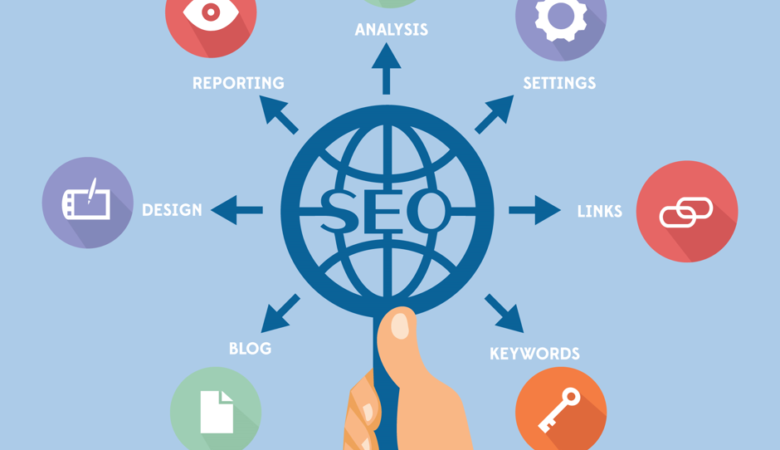Essential SEO Tips: Using the Best Strategies on Your Website
In the highly competitive online world, Search Engine Optimization (SEO) is vital for boosting your website’s visibility, driving traffic, and ultimately, growing your business. To achieve these goals, you need to implement the best SEO strategies that align with current trends and search engine algorithms. This article covers essential SEO tips that can help you optimize your website effectively and achieve long-term success. 1. Start with Thorough Keyword Research Understanding Your Audience: The foundation of any successful SEO strategy is a deep understanding of what your target audience is searching for. Keyword research helps you identify the terms and phrases that potential customers use when looking for products, services, or information related to your business. Using the Right Tools: Utilize keyword research tools like Google Keyword Planner, Ahrefs, or SEMrush to discover relevant keywords with high search volume and low competition. Focus on finding a mix of broad keywords and long-tail keywords, which are more specific and often lead to higher conversion rates. Competitor Analysis: Analyze your competitors to see what keywords they are ranking for and identify gaps in their strategies. This can reveal opportunities for you to target keywords they may have overlooked. 2. Optimize On-Page SEO Elements Crafting Effective Title Tags and Meta Descriptions: Title tags and meta descriptions are critical for both SEO and user experience. Ensure each page on your website has a unique, keyword-rich title tag that accurately reflects the content. The meta description should be compelling and provide a clear summary of the page, encouraging users to click through from search engine results. Utilizing Header Tags: Header tags (H1, H2, H3) are essential for organizing your content and making it more readable. Use your primary keyword in the H1 tag and structure your content with H2 and H3 tags to guide both search engines and users through your content. Optimizing Images: Images play a vital role in user engagement, but they also need to be optimized for SEO. Use descriptive filenames and alt text for images that include relevant keywords. Compress images to reduce file size, which helps improve page load times. Internal Linking: Internal links help distribute page authority across your site and improve navigation for users. Use keyword-rich anchor text for internal links to enhance SEO and guide visitors to related content. 3. Create High-Quality, Engaging Content Content is King: Search engines prioritize websites that offer valuable, relevant, and well-structured content. Focus on creating content that addresses your audience’s pain points, answers their questions, and provides actionable insights. High-quality content is more likely to be shared, linked to, and ranked higher by search engines. Content Variety: Incorporate different types of content, such as blog posts, infographics, videos, and case studies, to engage a broader audience. Diversifying your content not only attracts different types of visitors but also provides multiple opportunities for ranking in search engines. Regular Updates: Keep your website fresh by regularly updating your content. Search engines favor websites that frequently publish new content or refresh existing pages. Regular updates signal that your website is active and relevant, which can improve your rankings. 4. Enhance Technical SEO for Better Performance Boosting Site Speed: A fast-loading website is crucial for both user experience and SEO. Slow websites can lead to high bounce rates and lower search rankings. Use tools like Google PageSpeed Insights to identify issues affecting your site’s speed and take steps to optimize images, reduce code bloat, and leverage browser caching. Mobile Optimization: With the majority of users accessing websites via mobile devices, mobile optimization is no longer optional. Ensure your website is responsive and delivers a seamless experience across all devices. Google’s mobile-first indexing means the mobile version of your site is prioritized in rankings, so optimizing for mobile is essential. Ensuring Crawlability: Search engines need to be able to crawl and index your website effectively. Create and submit an XML sitemap to help search engines understand your site structure. Use Google Search Console to monitor indexing status and identify any issues that might be preventing search engines from accessing your content. 5. Build and Manage High-Quality Backlinks Earning Authority with Backlinks: Backlinks from reputable websites are one of the most important factors in SEO. They signal to search engines that your website is trustworthy and authoritative. Focus on earning high-quality backlinks through guest blogging, creating shareable content, and building relationships with industry influencers. Avoiding Black-Hat Tactics: While it might be tempting to use quick-fix methods like buying backlinks, these black-hat tactics can lead to severe penalties from search engines. Instead, focus on organic, white-hat strategies that build credibility over time. Monitoring Your Backlink Profile: Regularly review your backlink profile using tools like Ahrefs or Moz. Disavow any spammy or low-quality links that could harm your site’s reputation. A clean backlink profile is crucial for maintaining your website’s authority and rankings. 6. Leverage Local SEO for Targeted Traffic Optimizing for Local Search: If your business serves a specific geographic area, local SEO is essential. Start by claiming and optimizing your Google My Business (GMB) profile. Ensure your business name, address, and phone number (NAP) are consistent across all online platforms, including directories and social media profiles. Creating Localized Content: Develop content that appeals to your local audience, such as blog posts about local events, guides specific to your area, or collaborations with other local businesses. Local content helps establish your website’s relevance in local search results and can improve your visibility for local queries. Earning Local Citations: Local citations (mentions of your business on other websites) are important for boosting your local SEO. Ensure your business is listed in relevant local directories, industry-specific websites, and review platforms. Accurate and consistent citations help search engines verify your business’s legitimacy and improve your local rankings. 7. Measure, Analyze, and Optimize Your SEO Efforts Tracking Performance: SEO is an ongoing process, and monitoring your performance is key to continuous improvement. Use tools like Google Analytics and Google Search Console to track key metrics such as organic traffic, bounce rates, and











